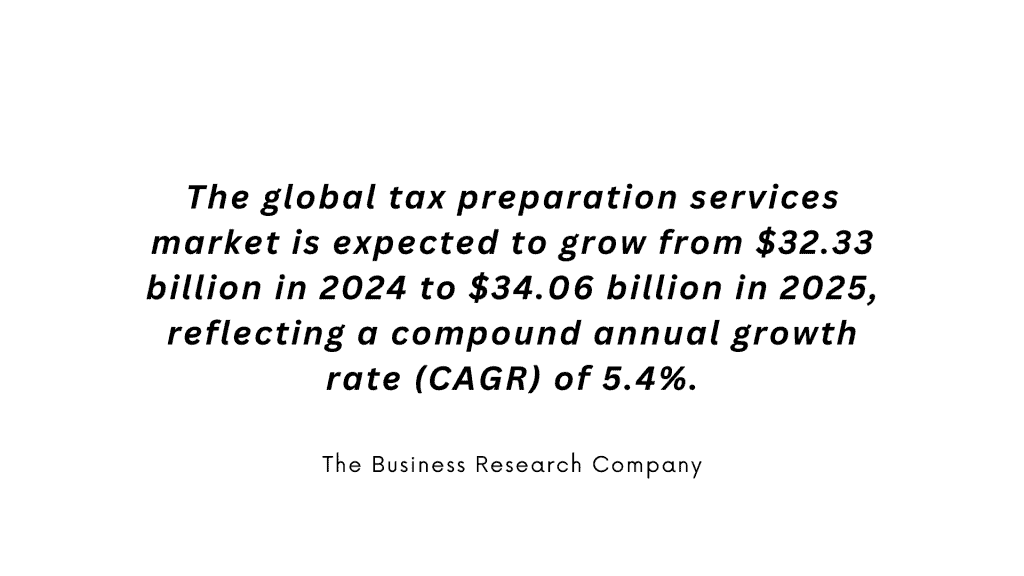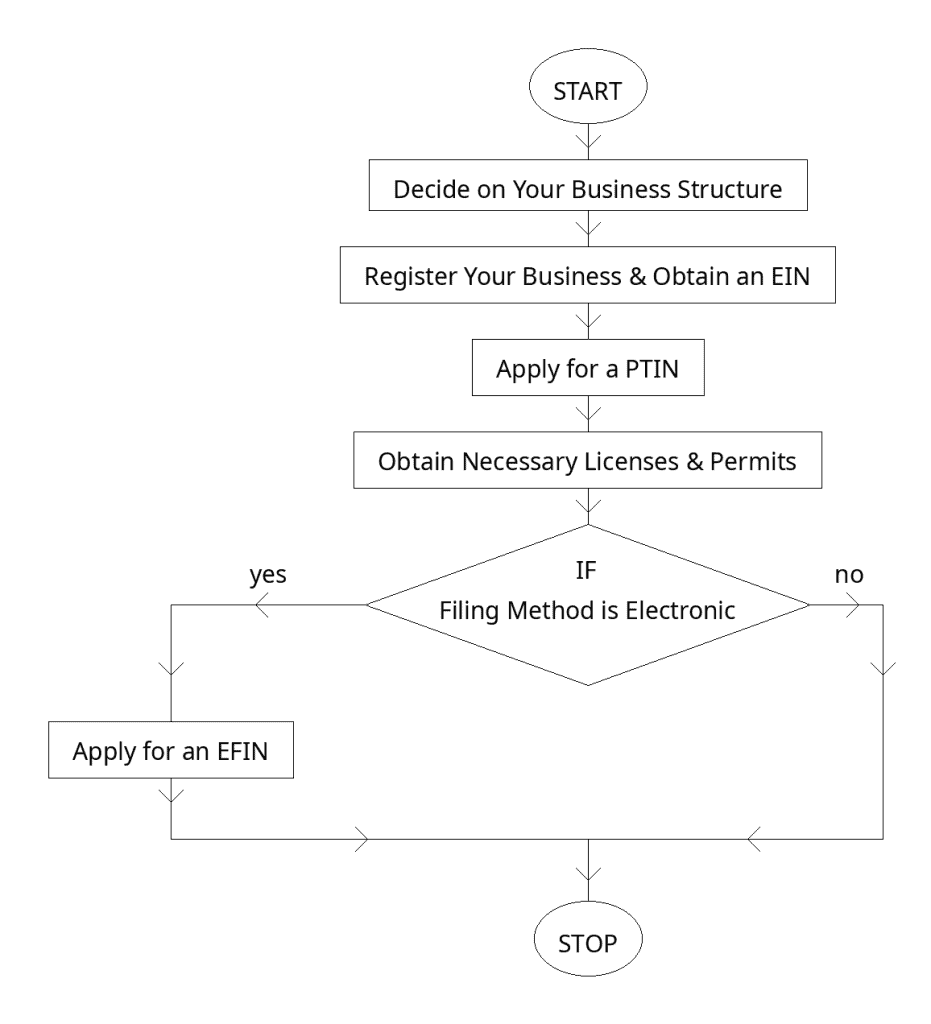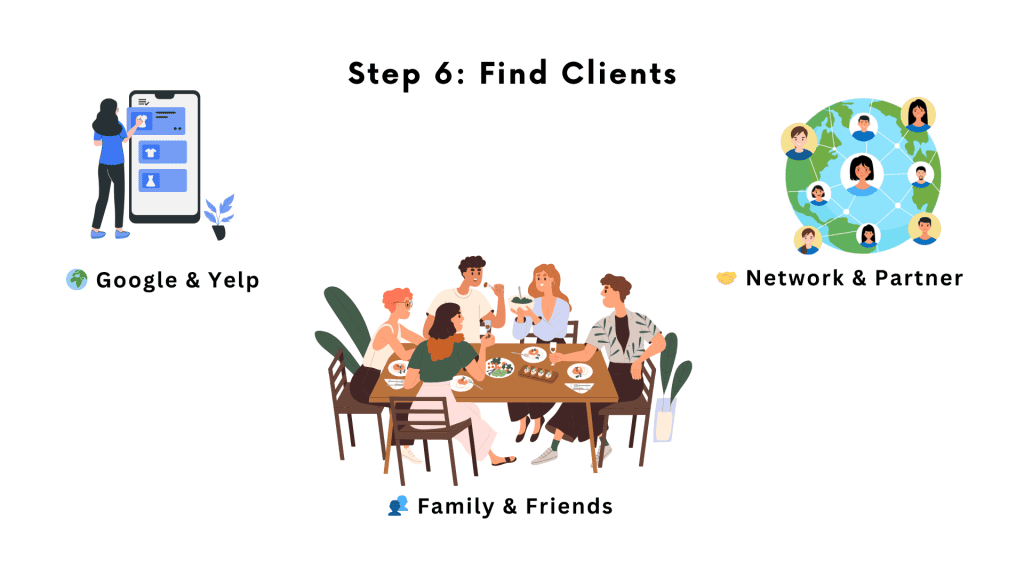Starting a tax business in 2025 is a great opportunity because taxes are essential everywhere. Individuals and businesses always need help with tax filing, deductions, and compliance. With low startup costs, you can begin from home with basic training and the right software. It’s a recession-proof industry since taxes must be filed regardless of the economy. Plus, tax professionals can earn a high income, especially during tax season.

No matter where you are, this is the perfect time to start and grow a successful tax business!
Disclaimer: This article is written for a U.S. audience, but the steps to start a tax business apply worldwide. While some terms (like IRS and tax software) may differ, the core strategies work in any country. Keep reading to learn how to build a successful tax business anywhere!
Step 1: Learn the Basics of the Tax Industry
Before you start your tax business, you need to understand what a tax professional does and decide which path is best for you. Tax professionals help people and businesses file taxes, save money, and follow tax laws. Some just prepare tax returns, while others offer more advanced services like tax planning and representing clients in audits.
Boost your tax business with the TaxBiz Growth Kit—your all-in-one guide to attracting clients and scaling effectively.
What Type of Tax Professional Should You Be?
There are different types of tax professionals, and the right choice depends on what you want to do and how much training you’re willing to get:
- Tax Preparer – This is the easiest way to start. Tax preparers help people file their tax returns but can’t represent clients in audits unless they get more credentials. You don’t need a degree, but taking a training course can help you learn faster and attract more clients.
- Enrolled Agent (EA) – If you want to offer more services and charge higher fees, becoming an EA is a great option. EAs are licensed by the IRS (or the tax authority in your country) and can represent clients in audits or tax disputes. To become an EA, you need to pass a special exam.
- Certified Public Accountant (CPA) – This is the most advanced option. CPAs can prepare taxes, handle accounting, and offer financial advice. Becoming a CPA takes longer because you need a college degree, pass a tough exam, and gain work experience. This is the best option if you want to work with businesses or offer full financial services.
Check Your Local Requirements
Every country has its own rules for tax professionals. Some places require you to register with the government, get a license, or pass an exam. Make sure you check what’s needed in your area before you start.
Which Option is Best for You?
If you want to start quickly with low costs, becoming a tax preparer is the easiest choice. If you want to earn more and offer bigger services, becoming an EA or CPA is a better option. No matter what you choose, learning tax laws and getting experience will help you build a successful tax business!
Step 2: Set Up Your Business Legally
Before you start taking clients, you need to legally set up your tax business. This ensures your business is recognized by the government, keeps your finances organized, and helps you avoid legal trouble later.
Choose a Business Structure
The first step is deciding how you want to legally register your business. Each option has different tax benefits, costs, and legal protections:
- Sole Proprietorship – The easiest and cheapest option. You can start under your own name, but you’re personally responsible for any business debts or legal issues.
- Limited Liability Company (LLC) – A popular choice because it protects your personal assets while keeping taxes simple. It also makes your business look more professional.
- Corporation – Best for those who plan to grow big and need outside investors. It offers strong legal protection, but it’s more complex to manage.
Register Your Business & Get an EIN
Once you pick a business structure, you need to register your business with your local government. In the U.S., you also need to apply for an EIN (Employer Identification Number) from the IRS, which is like a Social Security Number for your business. This number helps you open a business bank account, file taxes, and hire employees if needed.

Apply for a PTIN (Preparer Tax Identification Number)
If you plan to prepare tax returns for clients in the U.S., you must apply for a PTIN from the IRS. This is a unique number that allows you to legally charge for tax preparation services. The application is free and can be done online.
Apply for an EFIN (Electronic Filing Identification Number)
If you want to file tax returns electronically instead of using paper forms, you’ll need an EFIN. This is required by the IRS and helps tax professionals submit tax returns faster and more securely. The approval process takes some time, so apply early.
Final Thoughts
Setting up your business legally is an important step that protects you and makes your tax business official. Once everything is registered, you’ll be ready to start accepting clients with confidence!
Step 3: Get the Right Software & Tools
Now that your business is legally set up, it’s time to get the right tools to work efficiently and serve your clients professionally. Having good software will make tax preparation faster, reduce mistakes, and help you stay organized.
| Tool Type | Examples | Purpose |
| Tax Preparation | Drake, ProSeries, TaxSlayer | Filing tax returns efficiently |
| Accounting | QuickBooks, Xero | Bookkeeping & financial tracking |
| Cloud Storage | Google Drive, Dropbox | Secure document management |
| Password Manager | LastPass, 1Password | Protect client information |
1. Choose a Professional Tax Software
A reliable tax software will save you hours of work and help you file tax returns accurately. Depending on your country, you’ll find different options, but look for software that supports electronic filing, calculations, and client management.
Some popular tax software options include:
- Drake Tax, ProSeries, and TaxSlayer (Popular in the U.S.)
- TaxCalc (UK)
- TaxTron (Canada)
- HandiSoft (Australia)
- Local government-approved tax software (Check what’s available in your country)
If you’re just starting out, many software providers offer free trials or pay-per-return options, so you don’t have to spend a lot upfront.
2. Get an Accounting & Bookkeeping Tool
Even if you’re mainly doing tax preparation, you’ll still need a way to track your income, expenses, and invoices. A simple accounting tool will help you:
✅ Keep records of what clients owe you
✅ Track your business expenses for tax deductions
✅ Generate invoices and accept payments easily
Some great accounting tools include:
- QuickBooks (Worldwide)
- Xero (Great for small businesses)
- Wave (Free option for basic accounting)
If you don’t want to invest in paid software right away, you can start with a simple spreadsheet and upgrade as your business grows.
3. Securely Store Client Information
Tax preparation involves handling sensitive personal and financial data, so you must keep it safe. A few essential security tools include:
- Cloud storage (Google Drive, Dropbox, OneDrive) for keeping client documents organized
- Password managers (1Password, LastPass) to securely store login details
- Encrypted email services for safely sharing documents with clients
Keeping your client’s information secure will build trust and help you avoid legal issues related to data privacy.
Having the right software and tools will make your tax business run smoothly and look professional. Start with basic tools that fit your budget, and upgrade as your business grows. The right setup will help you work faster, stay organized, and keep your clients happy!
Step 4: Create a Professional Brand & Online Presence
Now that your tax business is set up, it’s time to make it look professional and attract clients. A strong brand and online presence will help people trust your services and make it easy for them to find you.
1. Choose a Business Name & Logo
Your business name should be simple, professional, and easy to remember. It can be your own name (e.g., “Smith Tax Services”) or something that highlights your expertise (e.g., “SmartTax Solutions”).
Once you have a name, you’ll need a logo that looks clean and professional. You can:
- Use free design tools like Canva to create one yourself.
- Hire a freelancer on Fiverr or Upwork to design one for you.
- Use a logo generator like Looka if you want a quick and simple option.
2. Set Up a Simple Website
A website is like your online business card—it tells potential clients who you are, what services you offer, and how to contact you. Your website doesn’t have to be fancy, but it should include:
✅ Your services (tax preparation, consulting, bookkeeping, etc.)
✅ Your pricing (or a call-to-action like “Contact for a free quote”)
✅ Your contact details (phone, email, and location if applicable)
You can create a simple and affordable website using platforms like:
- Wix (Beginner-friendly)
- WordPress (More customizable)
- Squarespace (Beautiful templates)
3. Claim Your Google My Business (GMB) Listing
If you want local clients to find you easily, you must set up a Google My Business (GMB) profile. This will help you appear in Google Search and Google Maps when people look for tax services near them.
To set it up:
- Go to Google My Business and create a free account.
- Add your business name, phone number, website, and services.
- Encourage happy clients to leave reviews to boost your credibility.
If GMB is not available in your country, look for local business directories where you can list your services.
4. Create Social Media Pages
Social media is a great way to connect with potential clients and grow your business. You don’t need to be on every platform—just focus on where your ideal clients are:
- Facebook – Great for reaching individuals and local businesses.
- LinkedIn – Best for networking with professionals and business clients.
- Instagram – Works well if you can create simple, engaging content about taxes and finances.
Building a professional brand and online presence doesn’t have to be complicated. Start with a simple name, website, and social media page, then grow from there. The easier it is for clients to find and trust you, the faster your business will grow!
Step 5: Find Your First Clients

Getting your first clients is easier than you think! Start by telling family and friends about your services—they might need help or refer you to others.
Next, list your business online so people can find you. Add your business to Google My Business, Yelp, and Facebook with clear contact details.
Finally, network with small business owners, realtors, and freelancers—they all need tax help! Join local groups, attend events, and offer a free consultation to attract clients.
The more people know about you, the faster your business will grow!
Step 6: Market & Grow Your Tax Business
Now it’s time to attract more clients and grow your business!
- Use social media – Post tax tips, client testimonials, and updates on Facebook, LinkedIn, and Instagram to stay visible.
- Run ads – Facebook & Google Ads help you reach local clients fast, especially during tax season.
- Share helpful content – Write blogs, make short videos, or post tax-saving tips to build trust and establish yourself as an expert.
- Offer seasonal deals – Discounts or referral bonuses during tax season can bring in more clients quickly.
Need a faster way to grow? The TaxBiz Growth Kit gives you ready-to-use marketing strategies, ad templates, SEO checklists, and branding tools to help you scale your tax business quickly. Get everything you need to stand out and attract more clients!
Crux of the Article
Starting a tax business in 2025 is a great opportunity, and it’s easier than you think! First, learn the basics and choose the right path (tax preparer, EA, or CPA). Next, legally set up your business, get the right software and tools, and build a strong online presence with a professional website and social media. Finding clients starts with referrals, local listings, and networking, and consistent marketing will help you grow fast.

Want to make your journey even easier? The TaxBiz Growth Kit is your one-stop solution for tax business success. It includes marketing strategies, ad templates, SEO checklists, branding tools, and more to help you attract clients and grow faster. Get everything you need to build and scale your tax business today!

I’m Maqsood, a freelance writer specializing in finance and tech. With experience crafting content for dozens of companies worldwide, I turn complex ideas into engaging stories that connect with audiences. From fintech trends to tax tips, I bring expertise and creativity to every project, delivering content that drives results.


